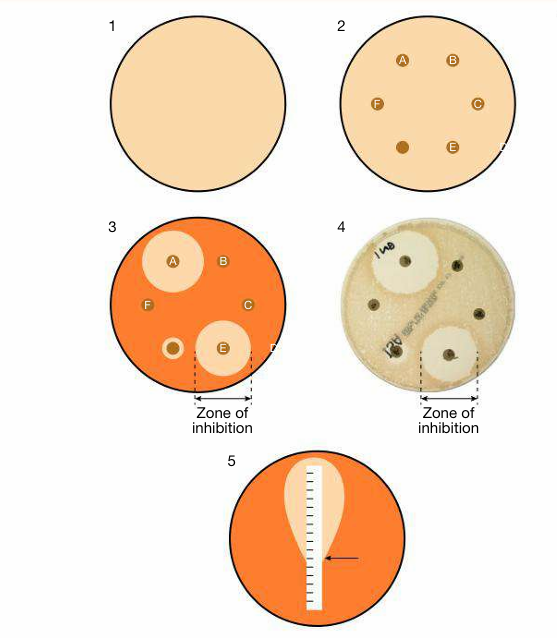

النبات

مواضيع عامة في علم النبات

الجذور - السيقان - الأوراق

النباتات الوعائية واللاوعائية

البذور (مغطاة البذور - عاريات البذور)

الطحالب

النباتات الطبية


الحيوان

مواضيع عامة في علم الحيوان

علم التشريح

التنوع الإحيائي

البايلوجيا الخلوية


الأحياء المجهرية

البكتيريا

الفطريات

الطفيليات

الفايروسات


علم الأمراض

الاورام

الامراض الوراثية

الامراض المناعية

الامراض المدارية

اضطرابات الدورة الدموية

مواضيع عامة في علم الامراض

الحشرات


التقانة الإحيائية

مواضيع عامة في التقانة الإحيائية


التقنية الحيوية المكروبية

التقنية الحيوية والميكروبات

الفعاليات الحيوية

وراثة الاحياء المجهرية

تصنيف الاحياء المجهرية

الاحياء المجهرية في الطبيعة

أيض الاجهاد

التقنية الحيوية والبيئة

التقنية الحيوية والطب

التقنية الحيوية والزراعة

التقنية الحيوية والصناعة

التقنية الحيوية والطاقة

البحار والطحالب الصغيرة

عزل البروتين

هندسة الجينات


التقنية الحياتية النانوية

مفاهيم التقنية الحيوية النانوية

التراكيب النانوية والمجاهر المستخدمة في رؤيتها

تصنيع وتخليق المواد النانوية

تطبيقات التقنية النانوية والحيوية النانوية

الرقائق والمتحسسات الحيوية

المصفوفات المجهرية وحاسوب الدنا

اللقاحات

البيئة والتلوث


علم الأجنة

اعضاء التكاثر وتشكل الاعراس

الاخصاب

التشطر

العصيبة وتشكل الجسيدات

تشكل اللواحق الجنينية

تكون المعيدة وظهور الطبقات الجنينية

مقدمة لعلم الاجنة


الأحياء الجزيئي

مواضيع عامة في الاحياء الجزيئي


علم وظائف الأعضاء


الغدد

مواضيع عامة في الغدد

الغدد الصم و هرموناتها

الجسم تحت السريري

الغدة النخامية

الغدة الكظرية

الغدة التناسلية

الغدة الدرقية والجار الدرقية

الغدة البنكرياسية

الغدة الصنوبرية

مواضيع عامة في علم وظائف الاعضاء

الخلية الحيوانية

الجهاز العصبي

أعضاء الحس

الجهاز العضلي

السوائل الجسمية

الجهاز الدوري والليمف

الجهاز التنفسي

الجهاز الهضمي

الجهاز البولي


المضادات الميكروبية

مواضيع عامة في المضادات الميكروبية

مضادات البكتيريا

مضادات الفطريات

مضادات الطفيليات

مضادات الفايروسات

علم الخلية

الوراثة

الأحياء العامة

المناعة

التحليلات المرضية

الكيمياء الحيوية

مواضيع متنوعة أخرى

الانزيمات
Antimicrobial susceptibility testing
المؤلف:
Stuart H. Ralston , Ian D Penman, Mark W J Strachan , Richard Hobson
المصدر:
Davidsons Principles and Practice of Medicine
الجزء والصفحة:
24th Edition , p106-107
2025-01-26
1155
If growth of microorganisms in culture is inhibited by the addition of an antimicrobial agent, the organism is considered to be susceptible to that antimicrobial. Bacteriostatic agents cause reversible inhibition of replication and bactericidal agents cause cel death; the terms fungi static/ fungicidal are equivalent for antifungal agents, and virustatic/virucidal for antiviral agents. The lowest concentration of the antimicrobial agent at which growth is inhibited is the minimum inhibitory concentration (MIC), and the lowest concentration that causes cel death is the minimum bactericidal concentration (MBC). If the MIC is less than or equal to a predetermined breakpoint threshold, the organism is considered susceptible, and if the MIC is greater than the breakpoint, it is resistant. Breakpoints are determined for antimicrobial agents using a combination of pharma cokinetic and clinical data. The relationship between in vitro antimicrobial susceptibility and clinical response is complex, as response also depends on severity of illness, site of infection, pharmacokinetics, immune status, comorbidities and antibiotic dosing. Thus, although treating a patient according to the results of susceptibility testing increases the likelihood of recovery, it does not guarantee therapeutic success.
Susceptibility testing is often carried out by disc diffusion (Fig. 1). Antibiotic-impregnated filter paper discs are placed on agar plates containing bacteria; antibiotic diffuses into the agar, resulting in a concentration gradient centred on the disc. Bacteria are unable to grow where the antibiotic concentration exceeds the MIC, which may therefore be inferred from the size of the zone of inhibition. The MIC is commonly measured in diagnostic laboratories using ‘diffusion strips’.

fig1. Antimicrobial susceptibility testing by disc diffusion (panels 1–4) and minimum inhibitory concentration (MIC, panel 5). 1 The test organism is spread over the surface of an agar plate. 2 Antimicrobial impregnated discs (A–F) are placed on the surface and the plate is incubated (e.g. overnight). 3–4 After incubation, zones of growth inhibition may be seen. The organism is considered susceptible if the diameter of the zone of inhibition exceeds a predetermined threshold. 5 In a ‘diffusion strip’ test, the strip is impregnated with antimicrobial at a concentration gradient that decreases steadily from top to bottom. The system is designed so that the MIC value is the point at which the ellipse cuts a scale on the strip (arrow). (4) Kindly supplied by Charlotte Symes.
 الاكثر قراءة في التحليلات المرضية
الاكثر قراءة في التحليلات المرضية
 اخر الاخبار
اخر الاخبار
اخبار العتبة العباسية المقدسة

الآخبار الصحية















 قسم الشؤون الفكرية يصدر كتاباً يوثق تاريخ السدانة في العتبة العباسية المقدسة
قسم الشؤون الفكرية يصدر كتاباً يوثق تاريخ السدانة في العتبة العباسية المقدسة "المهمة".. إصدار قصصي يوثّق القصص الفائزة في مسابقة فتوى الدفاع المقدسة للقصة القصيرة
"المهمة".. إصدار قصصي يوثّق القصص الفائزة في مسابقة فتوى الدفاع المقدسة للقصة القصيرة (نوافذ).. إصدار أدبي يوثق القصص الفائزة في مسابقة الإمام العسكري (عليه السلام)
(نوافذ).. إصدار أدبي يوثق القصص الفائزة في مسابقة الإمام العسكري (عليه السلام)


















